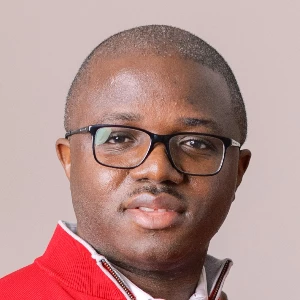 Workers packing vegetables at a cannery. Photo: World Bank/ Felana Rajaonarivelo
Workers packing vegetables at a cannery. Photo: World Bank/ Felana Rajaonarivelo
With its young population, vast and unique biodiversity, dense forests, fertile agricultural land, unparalleled touristic assets, and one of the longest coastlines in Africa, Madagascar has excellent potential for growth. But Madagascar is also unfortunately among the poorest countries in the world. Between 1960 (its year of independence) and 2020, Madagascar’s per capita income declined by 45%. Remarkably, this occurred in an environment largely free of violent conflict, perhaps the only such instance in the world.
The meager progress recorded during periods of relative stability has been swept away by various crises, usually political but also climatic and, more recently, by the COVID-19 pandemic. Despite a modest economic recovery after the country’s most recent political crisis, from 2009 to 2013, the GDP per capita growth rate has averaged just above 0% per year. The share of the population living below the national poverty line rose from 72.5% in 2012 to 75.2% in 2022.
What is preventing Madagascar from meeting its potential?
According to World Bank analyses, per capita income and the poverty rate are highly correlated in Madagascar. This means that the persistence of poverty is a result of the stagnation of growth. The World Bank’s Systematic Country Diagnostic indicates that elite capture and the lack of competition and transparency at the core of the state have hampered Madagascar’s growth performance.
Globally, the private sector has a leading role to play in improving growth and reducing poverty. However, Madagascar’s private sector is small, highly uncompetitive, and marked by low levels of investment, thus unable to create jobs, lift economic growth, and reduce poverty. Investment averaged 19.4% of GDP during 2013 to 2019, which is much lower than its level for peer countries.
Madagascar’s structural economic transformation has been limited: more than 90% of the working-age population remains engaged in subsistence agriculture and informal services. Job creation in industry and high value-added services remains low. Agricultural productivity is low, with limited technological adoption among smallholder farmers and weak market orientation. Low productivity coupled with deteriorating market accessibility are major contributors to high poverty rates in the rural areas.
Governance failures have limited Madagascar’s ability to achieve the sustained, inclusive, and high economic growth needed to reduce extreme poverty. High poverty is also the result of the weak governance that has remained unresolved for decades: weak institutions and elite control are eroding the rule of law, public sector accountability and the fight against corruption. The COVID-19 pandemic exacerbated an already-centralized power structure, weakened institutions, and created new challenges for transparency and accountability.
Another major obstacle is the weakness of human capital: Madagascar’s Human Capital Index (0.39) is among the lowest worldwide, meaning that, unlike healthier and better-educated children elsewhere, Malagasy children will not grow into productive adults.
Tropical cyclones are another major threat to Madagascar, particularly in the coastal regions of the east and north. On average, the country experiences three to four cyclones annually, causing death, destruction, and the disruption of economic activity. Natural disasters cost the economy about 1% of GDP each year—a huge amount for a desperately poor country. The World Bank’s early estimates of the impact of four cyclones in 2022 indicate that per capita consumption of impacted households declined by 30%, again a staggering amount.
What needs to be done to break the cycle of poverty in Madagascar?
The answer is almost mechanical because it comes up too often. It is, however, inescapable: Madagascar urgently requires a sustained period of robust economic growth spanning multiple years, which would enable the country to accumulate assets and build a solid foundation for its economic transformation. Put simply, to reduce poverty in Madagascar, it is essential to increase growth. High growth is possible in Madagascar but a strong commitment to economic reforms is needed to ensure its sustainability.
Madagascar needs to establish a pro-growth coalition that prioritizes the creation of the strong institutional framework necessary for a dynamic and competitive private sector. This will require a stable, reliable, and effective public administration that can provide infrastructure and services while enforcing only reasonable regulatory requirements. The absence of these crucial elements will result in insufficient growth, perpetuating poverty and missed opportunities. Recent bold reforms in mining, telecom, and energy can help foster the growth Madagascar needs to leap out of the poverty track it is in.
These reforms, bringing more market competition and transparency, are at the core of addressing elite capture and unlocking the door for jobs and private sector investment. Madagascar needs to raise capital accumulation which is now two to four times less than its peers. Can this reform-oriented agenda be the new normal for Madagascar? If the country can sustain inclusive growth over a long period, through the accumulation of human capital and physical assets while strengthening its resilience to shocks, then the country could exit the poverty trap. And, if not, growth will remain insufficient to reduce poverty and Madagascar will face another decade of missed opportunities.
As we embark on the new five-year (2023–2027) Country Partnership Framework (CPF) for Madagascar, the World Bank Group has taken stock of its past experiences and lessons learned. This new framework aims to increase and sustain growth in Madagascar. It’s summarized under three high-level outcomes (HLO): (i) Improved job opportunities; (ii) Improved human capital outcomes, and (iii) Enhanced resilience against shocks. The first HLO focuses on creating jobs and increasing incomes. The second seeks to make that growth more inclusive and remove constraints on future growth. The third focuses on strengthening resilience, which is necessary given Madagascar’s history of crises.
The framework proposes an integrated approach to the pathways to poverty reduction, combining promoting economic growth and overall economic transformation; creating opportunities for as many poor people as possible; and targeting the ultra-poor who do not have the capability to respond to incentives.
The CPF will leverage the approach to expand programs and financing in areas that have worked well in the past, such as nutrition, social protection, and integrated growth poles. Additionally, it will focus on two major sectors, energy, and telecommunications, and adopt a maximizing-finance-for-development approach, with joint implementation teams of the International Finance Corporation and the World Bank, as seen in the digital and rural electrification sectors.
As Nelson Mandela once said, “It is impossible until it is done.” Madagascar stands at a crossroads to convert its development challenges into an opportunity to find a path out of its predicament. Progress is possible if political ownership of its reform agenda is reinforced, and the fate of poor and vulnerable populations is put at the center of the policy debate.




Join the Conversation